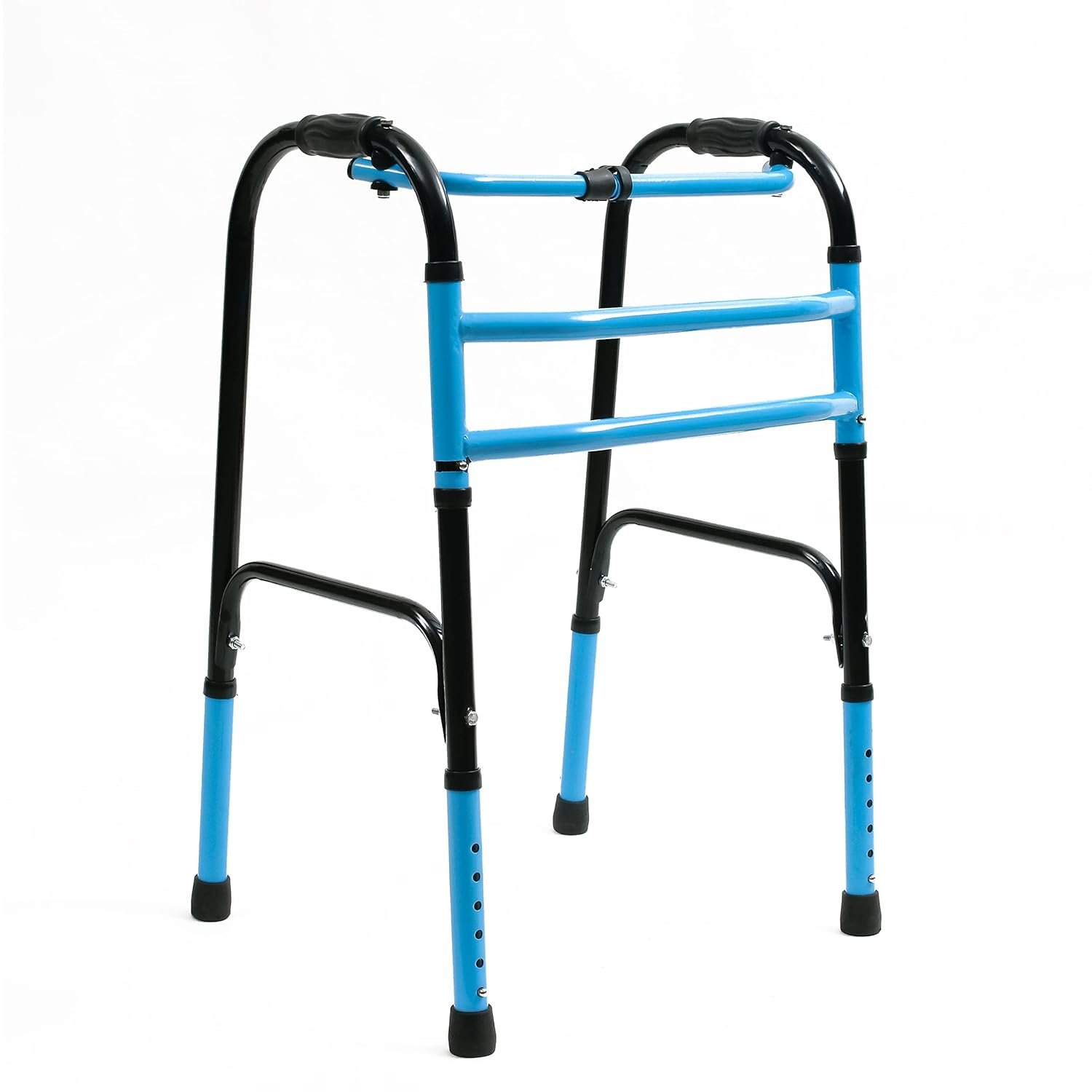Mobility aids play a crucial role in enhancing the lives of individuals with physical limitations, offering support, stability, and independence. Among these aids, adult walkers have undergone significant transformations over the years. What began as a simple tool to aid walking has evolved into a sophisticated, multifunctional device that caters to the needs of diverse users. This Post explores the evolution of adult walkers, focusing on the technological advancements and modern features that have shaped their design and functionality.
The Early Beginnings of Mobility Aids
The concept of mobility aids dates back to ancient times, with crutches and Adult walker & Walking sticks being the earliest forms of assistance. These primitive tools were mainly used to support individuals with leg injuries or disabilities. However, these devices were not designed for long-term use and offered limited stability and comfort.
In the mid-20th century, the first adult walkers began to emerge. The Swedish engineer Dr. Gunnar S. Norrman is often credited with designing the first modern walker in the 1950s. This early walker featured a basic frame with four legs, offering greater stability than crutches. While rudimentary by today’s standards, this design was a groundbreaking step toward improving mobility for individuals with disabilities.
The 1960s-1980s: Standardization and Improved Designs
By the 1960s, walkers became more widely used, particularly for elderly individuals and those recovering from surgery. During this period, walkers began to evolve into standardized designs. The metal-frame, four-legged walker became a staple in mobility aids. These walkers provided essential support and helped individuals with balance issues navigate their daily activities.
However, these early walkers were heavy, bulky, and lacked maneuverability. Users often had to lift the walker with each step, making movement more strenuous. Furthermore, the designs were not user-friendly, and many lacked comfort features.
In the 1970s and 1980s, manufacturers began focusing on making walkers more practical and user-friendly. Lighter materials, such as aluminum, replaced the heavier metal frames. Walkers also began to feature adjustable heights, padded handgrips, and more ergonomic designs to improve comfort. These enhancements addressed some of the key challenges users faced and marked the beginning of a more refined walker design.
The 1990s: The Introduction of Rollator Walkers
The 1990s witnessed a revolutionary shift in walker design with the introduction of the rollator walker. Unlike traditional walkers that required users to lift them, rollators featured wheels on each leg, allowing individuals to push the walker as they walked. This innovation made movement much easier, particularly for those who lacked the strength to lift a standard walker.
Rollators also incorporated additional features such as brakes, enabling users to control their speed and stop safely. Most rollators also included a seat, giving users a place to rest during their walks. These additions made rollators more versatile and practical for a wider range of users, from elderly individuals to younger people recovering from surgery.
The success of the rollator in the 1990s changed the mobility aid landscape, offering a more convenient and comfortable alternative to traditional walkers.
The 2000s: Technological Advancements and Customization
As technology advanced, so did the design of adult walkers. The 2000s saw the integration of smart features in many walker models, reflecting the growing trend of incorporating technology into healthcare devices. These technological innovations helped make walkers more functional and personalized.
Adjustable height settings became more prevalent, allowing users to customize the walker to their specific needs. This was particularly important for people with arthritis or other joint conditions who needed to reduce strain on their back and arms. Walkers also became lighter, thanks to the use of modern materials like carbon fiber and titanium.
Moreover, ergonomically designed handgrips, shock-absorbing wheels, and foldable frames made modern walkers easier to use and store. Some models incorporated storage baskets, allowing users to carry personal items, further enhancing convenience.
The 2010s: Integration of Smart Technology
The 2010s ushered in a new era of smart technology, making adult walkers even more advanced. Some modern walkers began to feature sensors, GPS, and health tracking systems. These smart walkers could track important health metrics, such as step count, gait, and heart rate, offering users valuable insights into their mobility and overall health.
Additionally, manufacturers focused on creating walkers with multi-functional capabilities. Some models now combine walkers, wheelchairs, and scooters, allowing users to switch between modes depending on their needs. This versatility is particularly beneficial for individuals who require more extensive mobility support.
Walkers also became more personalizable. Custom designs, including different colors, styles, and accessories, allowed users to select walkers that matched their preferences, helping to eliminate the stigma often associated with mobility aids.
The Present: Innovation Meets Accessibility
Today’s adult walkers are highly sophisticated devices that combine modern materials, technology, and ergonomic design to provide maximum comfort, stability, and functionality. Walkers are no longer one-size-fits-all products but are instead tailored to meet a variety of needs, from basic support to high-tech mobility solutions.
Manufacturers are continually working to improve walker designs, focusing on lightweight materials like carbon fiber and titanium to ensure durability while minimizing weight. Many models now feature foldable frames that make storage and transportation much easier. These walkers can easily be folded up and stored in the trunk of a car, making them perfect for active individuals who travel frequently.
Moreover, smart features such as automatic braking, navigation assistance, and real-time health monitoring have made walkers more than just tools for mobility—they’ve become essential devices that promote overall well-being.
Future Trends: Beyond Walking
Looking ahead, the future of adult walkers is closely tied to advancements in robotics and artificial intelligence (AI). Some researchers are exploring the use of robotic exoskeletons and AI-driven mobility systems that can assist individuals in walking without the need for manual effort. These advanced devices could revolutionize mobility aids, offering users more freedom and independence than ever before.
Another promising area is the integration of virtual reality (VR) and augmented reality (AR) in walkers. These technologies could help users improve their balance, coordination, and overall mobility by providing real-time feedback during walking exercises.
In addition, sustainability will likely become a key focus for manufacturers. As environmental concerns grow, there may be a push toward eco-friendly materials and energy-efficient designs in walker production.
Conclusion
The evolution of adult walkers from simple frames to high-tech mobility devices is a testament to the progress made in the field of mobility aids. Today’s walkers are not just functional—they are designed with comfort, safety, and personalization in mind, offering users greater freedom and independence.
With advancements in materials, technology, and design, walkers continue to evolve, offering new features that cater to the unique needs of each user. Whether for elderly individuals, those recovering from surgery, or anyone needing extra support, modern walkers are more versatile, accessible, and effective than ever before.
As technology continues to advance, it’s clear that the future of adult walkers will bring even more exciting innovations, making mobility aids an indispensable part of improving the lives of millions worldwide.
Related Reads
- Sandakphu Trek Height – Everything You Need to Know
- The Role of Food Safety Audit Companies in Global Supply Chains: Ensuring Trust and Transparency
- Custom Sandwich Paper for Cafes & Delis
- What Are the Best Treatments Offered by Knee Pain Specialists in Jericho?
- Bonn Climate Talks: India’s Climate Finance Concern Takes Center



